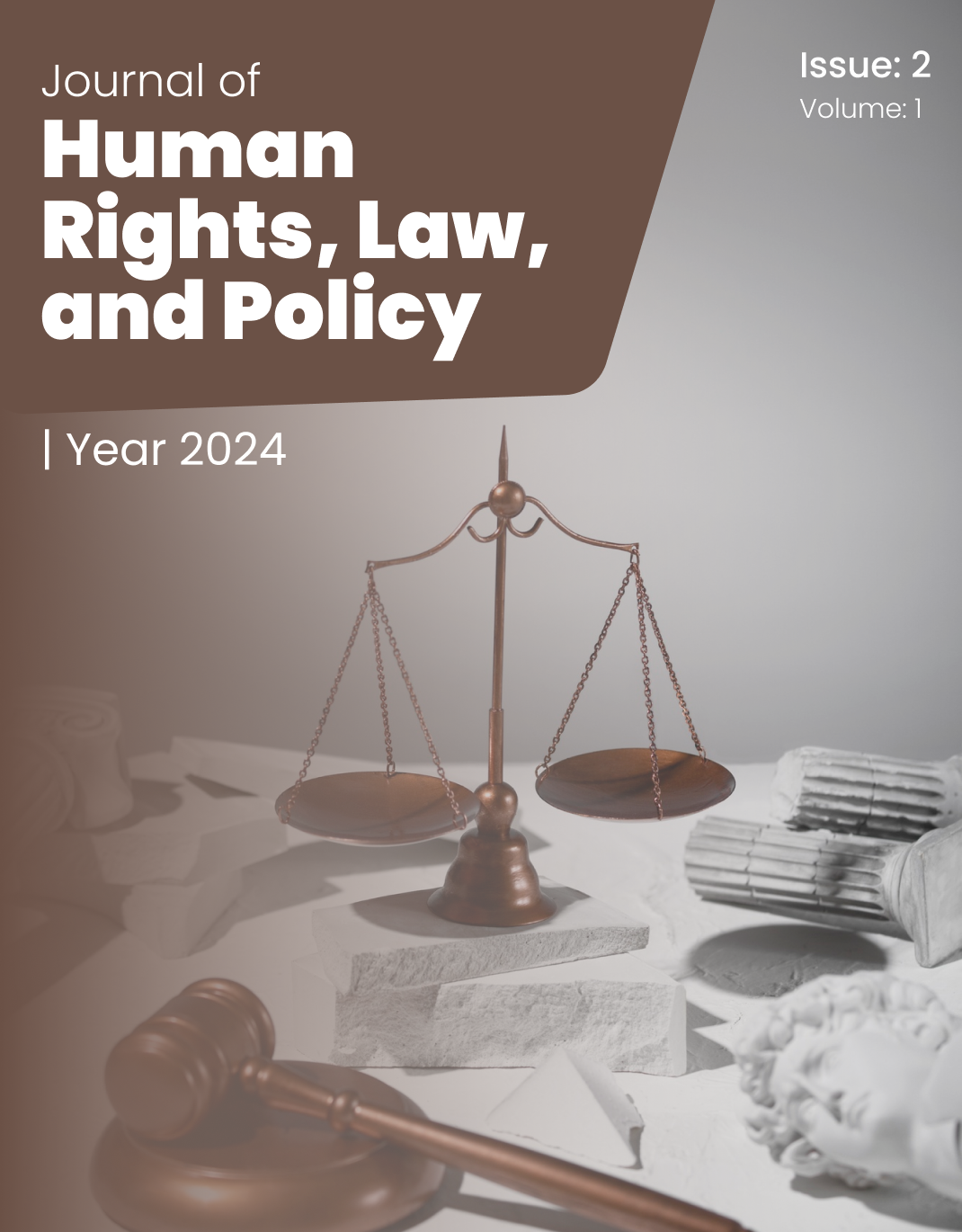The Role of Community Justice in Post-Conflict Reconstruction: A Qualitative Inquiry
Keywords:
community justice, post-conflict reconstruction, restorative justice, social cohesion, transitional justice, qualitative research, Iran, legal pluralismAbstract
This study aims to explore the role of community justice mechanisms in promoting social repair, trust reconstruction, and reconciliation in the context of post-conflict reconstruction in Tehran, Iran. A qualitative research design was employed, utilizing semi-structured interviews with 23 purposively selected participants, including community leaders, NGO workers, local residents, and informal justice facilitators based in Tehran. The data collection continued until theoretical saturation was achieved. All interviews were transcribed and thematically analyzed using NVivo software. The analytical process followed open, axial, and selective coding procedures grounded in principles of grounded theory, with a focus on identifying emergent patterns and categories relevant to community justice in a post-conflict urban environment. Four overarching themes emerged from the data: restorative justice mechanisms, community participation and ownership, institutional and legal interfaces, and psychosocial healing and social cohesion. Participants emphasized the importance of truth-telling, cultural rituals, and symbolic reparations in facilitating relational repair. Community justice practices were deeply embedded in local values and often functioned through collective ownership, with significant involvement from women and youth. The interface between formal institutions and community mechanisms revealed both collaboration and tensions, highlighting legal pluralism. Community-led justice was also associated with trauma processing, rebuilding trust, and reestablishing collective identity after conflict. Community justice plays a vital and multifaceted role in post-conflict reconstruction by offering culturally embedded, participatory, and restorative alternatives to formal legal processes. These mechanisms contribute not only to dispute resolution but also to long-term social healing, trust building, and moral reintegration. Supporting and integrating such grassroots initiatives can enhance the legitimacy, inclusivity, and sustainability of post-conflict recovery efforts, especially in contexts where formal transitional justice systems are absent or limited.
Downloads
References
Aghajanian, A., & Thompson, V. (2016). Civil society in Iran: A study of non-governmental organizations, community-based organizations, and women's participation. Middle East Journal, 70(4), 577–593.
Braithwaite, J. (2002). Restorative justice and responsive regulation. Oxford University Press.
Chirayath, L., Sage, C., & Woolcock, M. (2005). Customary law and policy reform: Engaging with the plurality of justice systems. World Bank Legal Review, 2(1), 1–29.
Clark, P. (2010). The Gacaca courts, post-genocide justice and reconciliation in Rwanda: Justice without lawyers. Cambridge University Press.
El-Zein, H. (2018). Tribal conflict resolution in the Middle East: Adapting traditional mechanisms for modern peacebuilding. Journal of Peacebuilding and Development, 13(2), 75–88.
Huyse, L. (2008). Introduction: Tradition-based justice and reconciliation after violent conflict. In L. Huyse & M. Salter (Eds.), Traditional justice and reconciliation after violent conflict (pp. 1–22). IDEA.
Lambourne, W. (2009). Transitional justice and peacebuilding after mass violence. International Journal of Transitional Justice, 3(1), 28–48.
Lederach, J. P. (1997). Building peace: Sustainable reconciliation in divided societies. United States Institute of Peace Press.
Macdonald, A. (2013). Local justice in transition: Hybrid justice and the legitimacy of community-based justice systems in post-conflict Sierra Leone. International Journal of Law, Crime and Justice, 41(1), 61–78.
Merry, S. E. (2006). Human rights and gender violence: Translating international law into local justice. University of Chicago Press.
Pham, P., Weinstein, H., & Longman, T. (2004). Trauma and PTSD symptoms in Rwanda: Implications for attitudes toward justice and reconciliation. JAMA, 292(5), 602–612.
Sadjadpour, K. (2013). Reading Tehran: A sociopolitical analysis of urban life and civil resilience in Iran. Carnegie Endowment for International Peace.
Shaw, R., & Waldorf, L. (Eds.). (2010). Localizing transitional justice: Interventions and priorities after mass violence. Stanford University Press.
Skaar, E., García-Godos, J., & Collins, C. (2005). Transitional justice in Latin America: The uneven road from impunity. Routledge.
Waldorf, L. (2006). Mass justice for mass atrocity: Rethinking local justice as transitional justice. Temple Law Review, 79(1), 1–36.
Downloads
Published
Submitted
Revised
Accepted
Issue
Section
License

This work is licensed under a Creative Commons Attribution-NonCommercial 4.0 International License.

